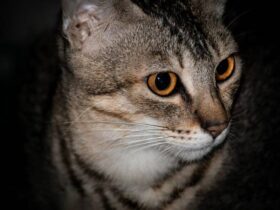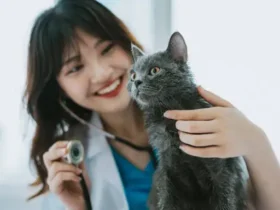Introduction
Water is essential for all living beings, including our feline friends. As pet owners, it’s vital to understand how crucial water intake is for your cat’s overall health and well-being. Cats are notorious for being picky about their drinking habits, often leading us to wonder, “How long can cats go without water?” The simple answer is: not long—typically, a day at most. In this blog, we’ll delve into the importance of water for cats, the signs of dehydration, and practical tips to ensure your cat stays adequately hydrated.
The Importance of Water for Cats
Water plays a fundamental role in every aspect of your cat’s bodily functions. From digestion to circulation, temperature regulation to waste elimination, water is critical. Cats have evolved from desert-dwelling ancestors, which means they can concentrate their urine more than some other animals, conserving water efficiently. However, this doesn’t mean they can go without it. A lack of sufficient water intake can lead to serious health problems, including kidney disease, urinary tract infections, and even death.
How Long Can Cats Go Without Water?
While cats may have a reputation for being hardy, they are highly susceptible to the effects of dehydration. On average, a cat can survive about 3 to 4 days without water, but this is the extreme end. Within 24 hours without water, a cat’s health can start to decline rapidly. The exact time can vary depending on the cat’s age, health, and environmental factors, but no cat should go more than a day without water.
Signs of Dehydration in Cats
Recognizing the early signs of dehydration in your cat is crucial for preventing serious health issues. Here are some symptoms to watch for:
- Lethargy: A dehydrated cat will be less active and may sleep more than usual.
- Dry Mouth and Gums: If your cat’s gums are sticky or dry instead of moist, this could be a sign of dehydration.
- Sunken Eyes: Dehydration can cause your cat’s eyes to appear sunken or dull.
- Loss of Appetite: Dehydrated cats often lose their desire to eat.
- Panting: Unlike dogs, cats don’t usually pant, so this can be a significant sign of dehydration.
- Skin Turgor: You can test this by gently pulling up the skin on the back of your cat’s neck. In a well-hydrated cat, the skin will snap back quickly; if it takes time, your cat may be dehydrated.
Causes of Dehydration in Cats
Several factors can contribute to dehydration in cats, including:
- Heat: High temperatures can cause your cat to lose more water through panting and sweating (cats sweat through their paws).
- Illness: Vomiting, diarrhea, fever, or any illness that causes your cat to lose fluids can quickly lead to dehydration.
- Inadequate Access to Water: If your cat’s water bowl is empty, dirty, or inaccessible, they might not drink enough water.
- Poor Diet: Cats on a dry food diet may not get enough moisture from their food, making it essential for them to drink more water.
- Stress or Anxiety: Cats under stress may eat and drink less than usual.
How Much Water Do Cats Need?
On average, a cat needs between 3.5 to 4.5 ounces of water per 5 pounds of body weight per day. This includes water from all sources, including food. For example, a 10-pound cat should consume about 7 to 9 ounces of water daily. Cats that eat wet food, which is about 70-80% water, may drink less, while cats on dry food need to drink more to meet their hydration needs.
How to Encourage Your Cat to Drink More Water
If you’re concerned that your cat isn’t drinking enough water, here are some tips to encourage better hydration:
- Provide Fresh Water: Make sure your cat has access to fresh water at all times. Cats are more likely to drink if the water is clean and fresh.
- Use a Fountain: Many cats prefer running water. A cat water fountain can make drinking more appealing.
- Add Water to Their Food: Mixing a little water into your cat’s wet food can help increase their water intake.
- Serve Wet Food: Consider feeding your cat more wet food, which contains higher water content.
- Multiple Water Stations: Place water bowls in various locations around your home to make it easier for your cat to drink.
- Flavor the Water: Some cats may be enticed to drink more if you add a small amount of tuna juice or low-sodium chicken broth to the water.
- Try Different Bowls: Cats can be particular about their drinking vessels. Experiment with different bowls—ceramic, glass, or stainless steel—to see what your cat prefers.
What to Do if Your Cat Refuses to Drink
If your cat refuses to drink water, it’s essential to address the issue immediately:
- Check for Illness: Decreased water intake can be a sign of an underlying illness. If your cat hasn’t been drinking, contact your veterinarian for advice.
- Hydration Methods: If your cat is mildly dehydrated, you can try using an eyedropper or syringe to give them water. Be gentle and only administer small amounts at a time.
- Electrolyte Solutions: In some cases, a veterinarian might recommend an electrolyte solution to help rehydrate your cat.
- Seek Veterinary Care: Severe dehydration is a medical emergency. If your cat shows signs of serious dehydration, take them to the vet immediately.
Preventing Dehydration in Cats
Preventing dehydration is far easier than treating it. Here are some ways to ensure your cat stays hydrated:
- Monitor Water Intake: Keep an eye on how much water your cat drinks each day. If you notice a decrease, investigate why.
- Regular Vet Checkups: Regular checkups can help catch potential health issues early, before they lead to dehydration.
- Climate Control: Keep your home cool and comfortable, especially in hot weather. Avoid letting your cat spend too much time outside in the heat.
- Balanced Diet: Feed your cat a balanced diet with sufficient moisture content. Wet food can be particularly beneficial in maintaining hydration.
When to Call the Vet
Dehydration can quickly escalate into a life-threatening condition. If your cat shows any of the following symptoms, seek veterinary care immediately:
- Severe Lethargy: If your cat is extremely weak and unresponsive.
- Inability to Drink: If your cat tries to drink but cannot or refuses to drink at all.
- Vomiting or Diarrhea: Persistent vomiting or diarrhea can lead to severe dehydration.
- Collapse or Seizures: These are signs of advanced dehydration and require emergency care.
Conclusion
Water is a critical component of your cat’s health. While cats may seem independent and capable, they are highly vulnerable to the dangers of dehydration. Ensuring your cat has access to fresh water, recognizing the signs of dehydration, and taking preventative measures can keep your feline friend healthy and happy. Remember, when it comes to hydration, a day without water can be too long for your cat. Always err on the side of caution and consult your vet if you have any concerns about your cat’s water intake.











Leave a Reply